Monstera belongs to the Araceae family and has its roots in the tropical regions of North and South America. It is frequently referred to as the Swiss cheese plant because of the holes that can be found in the leaves of the plant. Read on for our Monstera care guide.
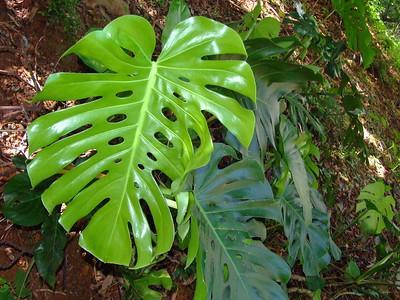
“Monstera plant” refers to a set of popular indoor houseplants recognized for their sweeping green leaves.
Monsteras are native to Portugal and Morocco, two countries in the western Mediterranean. In addition to this, wild Monsteras can be found all around the state of Florida, as well as in Asia, the Caribbean, and Australia. Many people have Monstera Rhaphidophora and Monstera Deliciosa plants in their homes. However, there are more than 50 different varieties of this climbing vine.
If you’ve ever worked in an office setting, you’ve probably come across the Monstera plant at some point. However, in recent years, the vine has made its way into the homes and hearts of many people. If you know what you’re doing, Monstera plants are an excellent addition to any living space and require only a little care and attention.
This guide explains how to care for, grow, and propagate this plant.
Flowers, Leaves, And Origins Of Monstera

Monstera is a large, exotic houseplant that originates in Mexico and is known for its supple, leathery leaves.
It is unknown for sure what purpose the distinctive holes in monstera leaves serve.
However, one theory suggests that the holes may have developed so that the leaves can withstand strong winds without tearing or that they may have developed so that a little bit more light can pass through the upper leaves to the older leaves.
These plants are adapted to grow well in humid rainforests, where they may make use of their aerial roots to “climb” up trees and reach the light higher in the canopy.
Here are some more facts about these mesmerizing tropical plants:
Leaves
The peculiar leaves of the Monstera plant, which are fashioned like hearts, are possibly the most distinguishing trait of this plant. Even though different species of plants have different leaf forms at different stages of development, the overall appearance of the plant is almost always lush and green.
Leaves develop on the curved portions of stems that are bent to form a hook. The leaves have a remarkable number of large perforations that look like Swiss cheese.
Furthermore, the older, larger leaves absorb sunlight and participate in photosynthesis, while the younger leaves often climb by adhering to the tree Monstera is climbing.
Flower And Fruit
The flowers of the Monstera plant start off as closed, white spikes that will eventually open up and reveal the fruits that are contained within it. The fruit is encircled by the white spathe, which resembles a large petal in appearance.
When the fruit has reached its full maturity and ripeness, it has a sweet flavor with a hint of pineapple. However, it could take more than a year for the fruit to mature completely.
The fruit should not be taken before it has reached its full ripeness since, if eaten before then, it would contain oxalic acid, which is a toxic substance. Oxalic acid is also contained in the plant’s stems and leaves, making it unsafe to consume them.
Morphology
Monstera is a climbing vine that likes to use other plants as scaffolding. As soon as the Monstera reaches a particular size, the lower half of the plant will die, changing it into a climber. At this point, the vine will begin to produce aerial roots that are lengthy and sticky. These aerial roots will continue growing until they find an appropriate supply of nutrients, typically one of the bulbous branches of large trees.
Once they have found this supply, the aerial roots will stop growing. Instead, these forked branches will be delved down by the aerial roots, which will then carry nutrients to the plant from those branches. Isn’t it a terrifying monstrosity?
Related: The Monstera Is Loose! How To Save Your Droopy Plant
Monstera Requirements
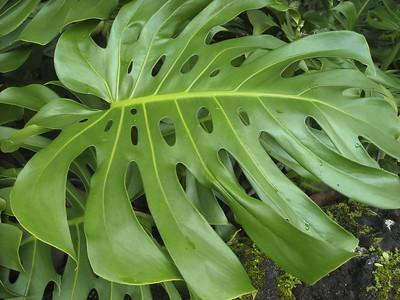
Monsteras thrive in a warm, humid setting with plenty of water and moderate, indirect sunlight.
Here are a few care requirements for Monstera plants:
Location
It is not difficult to care for a Monstera plant; all it needs is enough space to accommodate its growth. Surprisingly, Monsteras do not require a great deal of light to thrive.
The ideal site will have a little bit of shade and indirect light. You should try to keep your Monstera plants out of direct sunlight. When exposed to direct sunlight, it will have a higher risk of overheating, particularly during the warmer months and at midday.
Make sure, however, that the plant is getting diffused light spread out equally if you want it to flourish to its full potential.
The temperature should be around 21 degrees, and there should be a lot of humidity. You can keep your Monstera plant in the open air all through the summer, from the middle of May until the beginning of August, as long as there is no risk of frost and the temperature does not go below 12 degrees Celsius.
Soil
Monstera requires soil that is acidic to neutral in pH. However, in most cases, they are able to tolerate a small amount of alkaline soil as well. The best potting soil for Monsteras is one that is high in humus content. The presence of humus in the soil makes it possible for the soil to retain water while also preventing waterlogging.
In order to maintain the acidity of your potting soil, add rock meal, which is a mixture of granite and basalt, to the soil. Plantura Organic All-Purpose Compost is a fantastic option for cultivating Monstera plants and is highly recommended.
Monstera plants thrive in it because of its high compost content, neutral pH, and coconut puree, which acts as a natural water retention medium without causing waterlogging.
Caring For Monstera Houseplant
When kept inside, a Monstera requires regular misting with a diluted fertilizer solution, high humidity, and six to eight hours of bright indirect light per day.
Maintaining the health of a Monstera and giving it frequent feedings with a fertilizer that has a delayed release is the best way to make it look its best. It is also a good idea to undertake routine maintenance on a periodic basis, such as staking and feeding the plant.
But it’s not something you’ll have to do more than once every few months; even then, it’s usually just for show. So let’s take a more in-depth look at how to care for Monstera plants.
Light
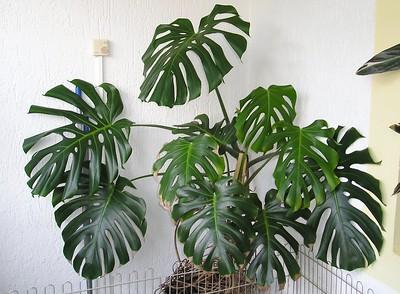
In order to thrive, Monsteras require anything from five to eight hours of bright indirect light each day.
One of the reasons Monsteras are so popular as houseplants is that they can thrive in a wide variety of lighting conditions. Light has a significant impact on the overall health of Monstera plants. Even though they do not enjoy being exposed to direct sunlight, they need a window for their huge, green leaves to develop, fenestrate, and ultimately thrive.
However, keep in mind that the amount of sunshine required varies from one variety to another, with some types requiring far more sunlight than others.
In general, the amount of light that a Monstera receives will determine the rate at which it grows. Some Monstera plants can flourish in lower light conditions; their growth is considerably slower than that of their relatives that prefer the sun.
Watering
This plant thrives when it is provided with a substantial amount of water. However, excessive moisture could induce Monstera root rot, a fungal disease that causes the roots of the plant to get damaged. In general, you should make it a habit to water them once every seven to 10 days. Reduce this duration considerably in cooler climates.
To determine whether or not the Monstera plant requires water, you must carefully press your finger into the soil up to the first knuckle. Give the plant a thorough soaking if the top inch or two of soil is dry, but be careful not to let it stand in water.
Humidity
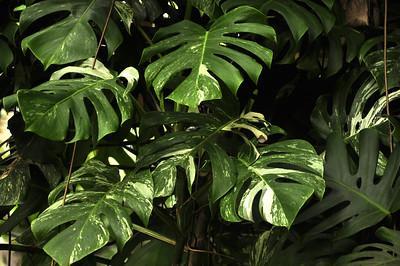
Monstera prefers humid environments with a humidity level between 40% and 60%.
It is recommended that a Monstera be kept at a humidity level that ranges from 60 to 70 percent. When the levels are even lower than this, you might notice that a few of the leaves are beginning to turn yellow and fall off of the plant. As a result, the plant could start to seem a little wilted.
However, if the air is very humid, the plant may become infected with mold, a fungus harmful to the plant’s stems and leaves.
If the foliage is continually damp, the risk of mold growing on it multiplies enormously. Therefore, finding a happy medium while caring for your Monstera plant in terms of the amount of water it receives is essential. The relative humidity can be determined with the help of an instrument called a hygrometer.
Finding a hygrometer that also monitors temperature is not difficult in today’s world. This is useful since you want to ensure that the air around your Monstera isn’t too hot or cold because either of these circumstances can cause problems.
Soil
Monstera is knowledgeable about the type of soil in which it thrives. These enormous, stunningly green plants require very high-quality soil that is able to drain extremely well but still holds onto moisture. In addition, the soil in which the Monsteras are grown needs to be nutrient-dense so that the plant’s roots can take in the nutrients.
Most garden centers offer soil formulated especially for Monstera, but if you want to manufacture your own, you only need a few key components.
Start with a quality potting mixture that has been turned with perlite, then add some activated charcoal and orchid bark to the mixture. You may also include some sphagnum moss, which is excellent at preventing the loss of moisture.
The end product of combining these elements will be soil capable of retaining water without getting waterlogged, is abundant in nutrients, and has a pH level between 5.5 and 7.
It is also recommended that the soil be replenished once every two to three years in order to keep the soil healthy and full of vitamins and minerals.
Fertilizer

In order to thrive, monstera plants, like most other plants with leafy foliage, require an N-P-K ratio of 3-1-2.
Consider fertilizer to be the vitamin supplement for plants. Even while sunlight is Monstera’s primary energy source, the plant must also draw upon the nutrients found in the soil to maintain its health and expand.
Your Monstera plant, much like the majority of other houseplants, will probably spend most of its life in the same soil. Because of this, the nutrient levels in the soil will quickly decline over time, and the only way to restore them without frequently altering the soil is to apply fertilizer. So when it comes to taking care of Monstera plants, you just need to use a small amount of fertilizer.
They do not thrive when overfed (beware of chemical burns), but they benefit from a little tender loving care in the form of an occasional dose of balanced slow-release fertilizer.
The spring and summer months are the best times to fertilize Monstera because this is when it is growing at its fastest. During the winter, its growth is stunted, and as a result, it does not require as much additional nutrition from the fertilizer as it would otherwise.
Staking
Much like pruning, it is an essential part of Monstera maintenance. Many species have large leaves, which might cause them to be quite top-heavy, particularly when attempting to ascend. Monstera, which is classified as hemi-epiphytes because they have both aerial and terrestrial roots, are almost always on the lookout for anything to which they might attach and climb. Your Monstera plants will flourish and thrive if you offer them the support they require in the form of stakes or climbing poles.
Stems can be staked to assist them in keeping their shape and reduce the likelihood of breaking. However, when it gets larger, your Monstera is more likely to become unruly unless you provide some support and anchoring so that it may grow neatly.
Pruning
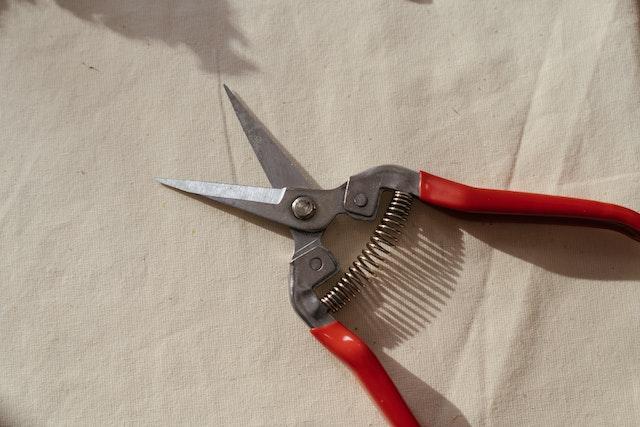
Remove dead leaves year-round, but do heavy pruning in spring and summer.
Pruning a Monstera plant indoors to encourage its growth can be done in a number of different ways; the method you use will be determined by the design you have in mind for the plant.
Trimming off a few dead leaves requires a quite different strategy compared to trying to bring an out-of-control plant under control. In the same vein, if you want to propagate your Monstera, you will need to exercise a little more caution when you prune it.
As the Monstera plant grows older and more mature, its older leaves will turn yellow on their own and eventually fall off. This is pretty usual, and there is no need for alarm regarding the few leaves that have turned yellow (but if several Monstera leaves are turning yellow, that might not be a good sign).
Also, if you want to keep your Monstera plant happy and healthy, it is essential to prune it on a regular basis so that you may remove any leaves that have become yellowed or old looking.
Repotting
Just like pruning, it is an essential part of taking care of your Monstera plant that needs to be done regularly. As they get older and larger, these stunning creatures typically require more space.
In most cases, you can get away with only repotting your Monstera once every two years or even less frequently if it is a species that grows slowly. However, new containers may be necessary every 12 to 18 months for rapidly growing plants.
Repotting is done for a number of reasons, one of which is to prevent illnesses such as root rot. Fresh soil may do wonders for sick plants and should therefore be considered if you cannot determine what is wrong with your Monstera. In addition, fresh soil can help sick plants recover much more quickly.
Propagation

Stem cuttings, air layering, and division are the three most common methods for propagating a Monstera plant.
The most well-liked species of Monstera are particularly well-suited for proliferation, making them a gift that keeps on giving. They can easily spread since they have separate nodes and aerial roots. Cuttings t can be started in water or transplanted straight into an appropriate planter that has been filled with soil.
The only precaution you need to take is to take stem cuttings only from robust plants when propagating new plants from them.
A good cutting should have at least two nodes to develop new growth, one to two robust, healthy leaves, and other evidence of health. It should also have other characteristics that indicate it is in good health.
Pests On Monsteras
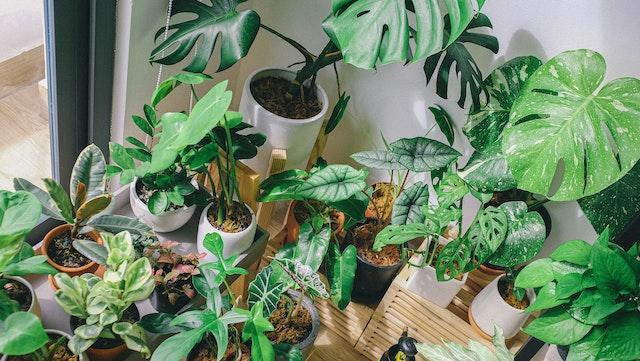
Monsteras are susceptible to suffering harm at the hands of insects like thrips, spider mites, and scales.
The most effective way to deal with pests is to learn how to prevent them from entering your home in the first place. However, even the most careful gardener will inevitably come upon a plant that has unwanted bugs at some point.
The presence of brown or yellow spots on the leaves and stem of the Monstera, holes in the leaves, sticky secretions on the leaves, and webbing are some of the general warning signs that you should be on the lookout for a while doing an inspection of your Monstera for pests.
The following is a list of some common pest types that attack Monstera plants.
Thrips
If you carefully inspect the leaves of your Monstera plant, you may notice thrips, which are very few insects that feed on plants. As a result of these minuscule insects sapping the moisture from the plant’s leaves, the plants’ foliage may eventually become dry and browned. In addition, they can bring viruses to your plants, which can cause them to harm or even cause them to die. In order to control thrips, you will need to apply neem oil all over the plant at least once every week and give it a spray.
Fungus Gnats
The plant itself is not subject to attack or inhibition by fungus gnats. On the other hand, as the name suggests, they are drawn to the fungus that could form in the moist soil of your potted plants.
Fungus gnat larvae feed on the plant’s delicate roots, which can lead to the plant’s eventual demise. Therefore, the use of Mosquito Bits, a form of biological pest management that removes fungus gnat larvae, is something we would recommend employing to eradicate fungus gnat larvae.
Either you can place a top treatment layer that will slowly decompose into the ground with each watering, or you can dissolve the chunks in your watering container. Both options are available to you (be warned that this takes some time).
Spider Mites
A member of the arachnid family, spider mites get their nutrition from the sap and tissues of the plants they infest. Typically, they will spin fine webs at the spots where a leaf or stem splits off. This behavior is similar to that of their more well-known relatives, the spiders.
The good news is that spider mites can be removed from a Monstera in a relatively straightforward manner. If you spray the plant with water from a hose or shower it, you can quickly cut down on the population of these pests.
You can also wash the leaves with horticultural soap or rubbing alcohol that is 70% strong in order to get rid of any mites that may have been left behind.
Conclusion
Monsteras are unusual houseplants that require little care and have spectacular leaves that are decorated with stunning hole patterns. Monsteras are trailing plants that prefer climbing around a stake, trellis, or trail over the edge of their containers.
However, there is no getting past the reality that regardless of how wonderful it is and how easy it is to care for, it requires space and will make a racket if you do not give it enough of it. So, in the long run, this houseplant is unsuitable for the window sill or a small apartment.
Frequently Asked Questions
Is Monstera a good indoor plant?
It should not come as a surprise that Monstera prefers a warm and humid environment because it is native to tropical rainforests from the southernmost tip of Mexico to Panama. As a result, Monstera is an excellent choice for growing indoors.
How do you care for a Monstera plant indoors?
To care for your Monstera plants indoors, water the plant once every 1 to 2 weeks, allowing the soil to dry in the interim completely. You should plan to water more frequently in areas with higher light levels and less frequently in areas with lower light levels.
Where should I put my Monstera plant in my house?
Generally speaking, the optimum location for a Monstera is in a window that faces east or near a window that faces south. Monsteras thrive in bright, indirect sunlight and, in most cases, will be at their happiest when placed close to a bright window where the sun’s rays will not directly hit the plant’s leaves.
How often should I water Monstera?
Before watering Monsteras, it is best to use filtered water or water that has been left out for at least one night. Then, water the plant once every 1 to 2 weeks, allowing the soil to dry completely. You should plan to water more frequently in areas with higher light levels and less frequently in areas with lower light levels.
Is tap water okay for Monstera?
Most municipal tap water is fine for Monsteras, but you may have problems if your water is mineralized or includes significant levels of chloramines.
A buildup of chlorine and other toxins in the soil of your Monstera plants is a common problem when watering with municipal supplies.
Should I mist my Monstera?
Monstera likes a moist setting. Thus, its leaves should be misted frequently. You also have the option of placing your plant in close proximity to other plants, which will result in an increase in the humidity of the air surrounding them.
How long can Monsteras go without water?
Monsteras are tough plants that may go up to four weeks without needing to be watered and still remain alive. Additionally, the longer a plant has been able to survive without being watered, the more established it is.
Sources For Further Reading
Monstera deliciosa (Ceriman, Cutleaf Philodendron, Hurricane Plant, Mexican Breadfruit, Mother-in-Law, Split-leaf Philodendron, Swiss Cheese Plant) | North Carolina Extension Gardener Plant Toolbox. (2022). Retrieved 12 November 2022, from https://plants.ces.ncsu.edu/plants/monstera-deliciosa/
Propagating Monstera deliciosa. (2022). Retrieved 12 November 2022, from https://extension.umn.edu/houseplants/propagating-monstera-deliciosa
Split-leaf philodendron, Monstera deliciosa. (2022). Retrieved 12 November 2022, from https://hort.extension.wisc.edu/articles/split-leaf-philodendron-monstera-deliciosa/
Editor’s Recommendations
Snow Queen Vs. Marble Pothos: Similarities and Differences
Watermelon Peperomia: The Best Steps For Successful Propagation
Dying Money Tree: Important Steps and Tips To Revive Your Plant







